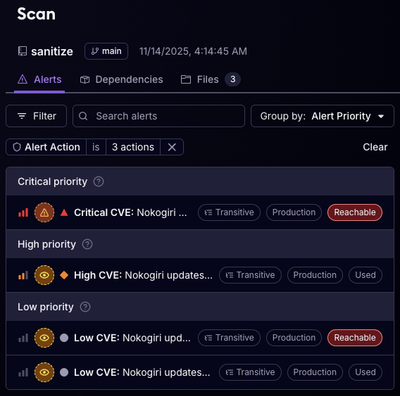
Product
Reachability for Ruby Now in Beta
Reachability analysis for Ruby is now in beta, helping teams identify which vulnerabilities are truly exploitable in their applications.
@web3-ui/components
Advanced tools
A set of React components made for web3-specific use cases. Fully compatible with and built on top of ChakraUI.
yarn add @web3-ui/components ethers
At the root of your React app, wrap your app in the <Provider> component:
// _app.tsx (or the root of your app)
import { Provider } from '@web3-ui/components';
// Passing in a theme is optional
function MyApp({ Component, pageProps }) {
return (
<Provider theme={yourChakraTheme}>
<Component {...pageProps} />
</Provider>
);
}
This is the list of components the package currently provides:
The Address component takes in an Ethereum address or ENS name and displays it in a human-readable format.
<Address value='dhaiwat.eth' shortened copiable>
shortened and copiable are optional props.
The AddressInput component is an input for Ethereum addresses. It supports ENS names too.
<AddressInput value={value} onChange={setValue} provider={provider} />
You need to pass in a provider prop if you want to use ENS names.
The NFT component takes in the contract address and the token ID of an NFT and displays it as a card. You can also pass in isTestnet to fetch the NFT data from the testnet API (only Rinkeby for now).
<NFT contractAddress="0xxxxx0x0x0x0x0x" tokenId={30} size="md" />
The size prop is optional.
The NFTGallery component renders a grid of all the NFTs owned by an account. It accepts ENS names too. You can also pass in isTestnet to fetch the NFT data from the testnet API (only Rinkeby for now).
<NFTGallery address="vitalik.eth" web3Provider={provider} gridWidth={4} />
You need to pass in a web3Provider if you want to support ENS names. We know this is not ideal and are fixing it.
gridWidth is an optional prop.
The Provider component is the web3-ui equivalent of ChakraUI's ChakraProvider component. You need to wrap this component around your entire App. See Getting Started for an example.
EtherInput is an input field that accepts values in wei or ether. It always returns the value to you in wei so that you can easily use it to interact with contracts without any conversions.
const [value, setValue] = useState();
<EtherInput value={value} setValue={setValue} unit="ether" />; // value will always be in wei. eg. if someone enters 1 in the input, value will be 10^18
TokenBalance is a stateless component that displays the name, symbol, balance, and USD value of an ERC20 token.
<TokenBalance
name="Devs 4 Revolution"
symbol="$CODE"
balance={200}
usdValue={100}
imgUrl={D_D_LOGO}
/>
FAQs
React UI components for web3
We found that @web3-ui/components demonstrated a not healthy version release cadence and project activity because the last version was released a year ago. It has 1 open source maintainer collaborating on the project.
Did you know?

Socket for GitHub automatically highlights issues in each pull request and monitors the health of all your open source dependencies. Discover the contents of your packages and block harmful activity before you install or update your dependencies.

Product
Reachability analysis for Ruby is now in beta, helping teams identify which vulnerabilities are truly exploitable in their applications.

Research
/Security News
Malicious npm packages use Adspect cloaking and fake CAPTCHAs to fingerprint visitors and redirect victims to crypto-themed scam sites.

Security News
Recent coverage mislabels the latest TEA protocol spam as a worm. Here’s what’s actually happening.